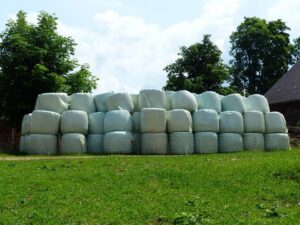Got Hay?
go.ncsu.edu/readext?888754
en Español / em Português
El inglés es el idioma de control de esta página. En la medida en que haya algún conflicto entre la traducción al inglés y la traducción, el inglés prevalece.
Al hacer clic en el enlace de traducción se activa un servicio de traducción gratuito para convertir la página al español. Al igual que con cualquier traducción por Internet, la conversión no es sensible al contexto y puede que no traduzca el texto en su significado original. NC State Extension no garantiza la exactitud del texto traducido. Por favor, tenga en cuenta que algunas aplicaciones y/o servicios pueden no funcionar como se espera cuando se traducen.
Português
Inglês é o idioma de controle desta página. Na medida que haja algum conflito entre o texto original em Inglês e a tradução, o Inglês prevalece.
Ao clicar no link de tradução, um serviço gratuito de tradução será ativado para converter a página para o Português. Como em qualquer tradução pela internet, a conversão não é sensivel ao contexto e pode não ocorrer a tradução para o significado orginal. O serviço de Extensão da Carolina do Norte (NC State Extension) não garante a exatidão do texto traduzido. Por favor, observe que algumas funções ou serviços podem não funcionar como esperado após a tradução.
English
English is the controlling language of this page. To the extent there is any conflict between the English text and the translation, English controls.
Clicking on the translation link activates a free translation service to convert the page to Spanish. As with any Internet translation, the conversion is not context-sensitive and may not translate the text to its original meaning. NC State Extension does not guarantee the accuracy of the translated text. Please note that some applications and/or services may not function as expected when translated.
Collapse ▲ With the summer starting to wind down, it has defiantly been hard on the grass. Not only was the heat hard this summer, but the drought did not help us at all. Many people I have talked to say they are lucky to even get a fall cutting this year.
With the summer starting to wind down, it has defiantly been hard on the grass. Not only was the heat hard this summer, but the drought did not help us at all. Many people I have talked to say they are lucky to even get a fall cutting this year.
With the winter months ahead of us, many of us are wondering how will we have enough hay to get us through the winter without selling all the cattle. While soil samples are great for getting a general idea of soil health, it is also important to take hay samples as well.
How will hay samples help me? Hay samples help to ensure your livestock are getting the nutrients that are needed. If animals are lacking vital nutrients, your production will suffer which will affect your bottom line. An example of this would be cattle not putting weight on like they should, dull-looking hair, etc.. With the costs of feed and hay on the increase, it is important to be cost-effective. You do not want to be giving your livestock nutrients that are not needed, you want to ensure they are maximizing production with the actually needed nutrients.
I would be happy to come out and help you collect your hay samples. After you have collected your hay samples put them in a plastic bag and label the plastic bag with permanent ink with your name, the date the samples were taken and a sample ID that you are sure to remember. Make sure to squeeze all excess air out of the bag. You may FedEx or UPS them to Forage Testing NCDA&CS, 4000 Reedy Creek Road, Raleigh NC 27607. Make sure to include a check or money order made out to the NCDA&CS for the appropriate amount ($10/bag submitted).
Or contact your feed supplier, most feed companies will assist in sampling your hay as a service to the customer.
If you are in need of hay or want to sell hay the NC Department of Ag Hay Alert website may be beneficial for you.
Producers can also call the Hay Alert Line at (866) 506-6222
Also, be sure to let me know as I get calls from people looking to purchase hay.




